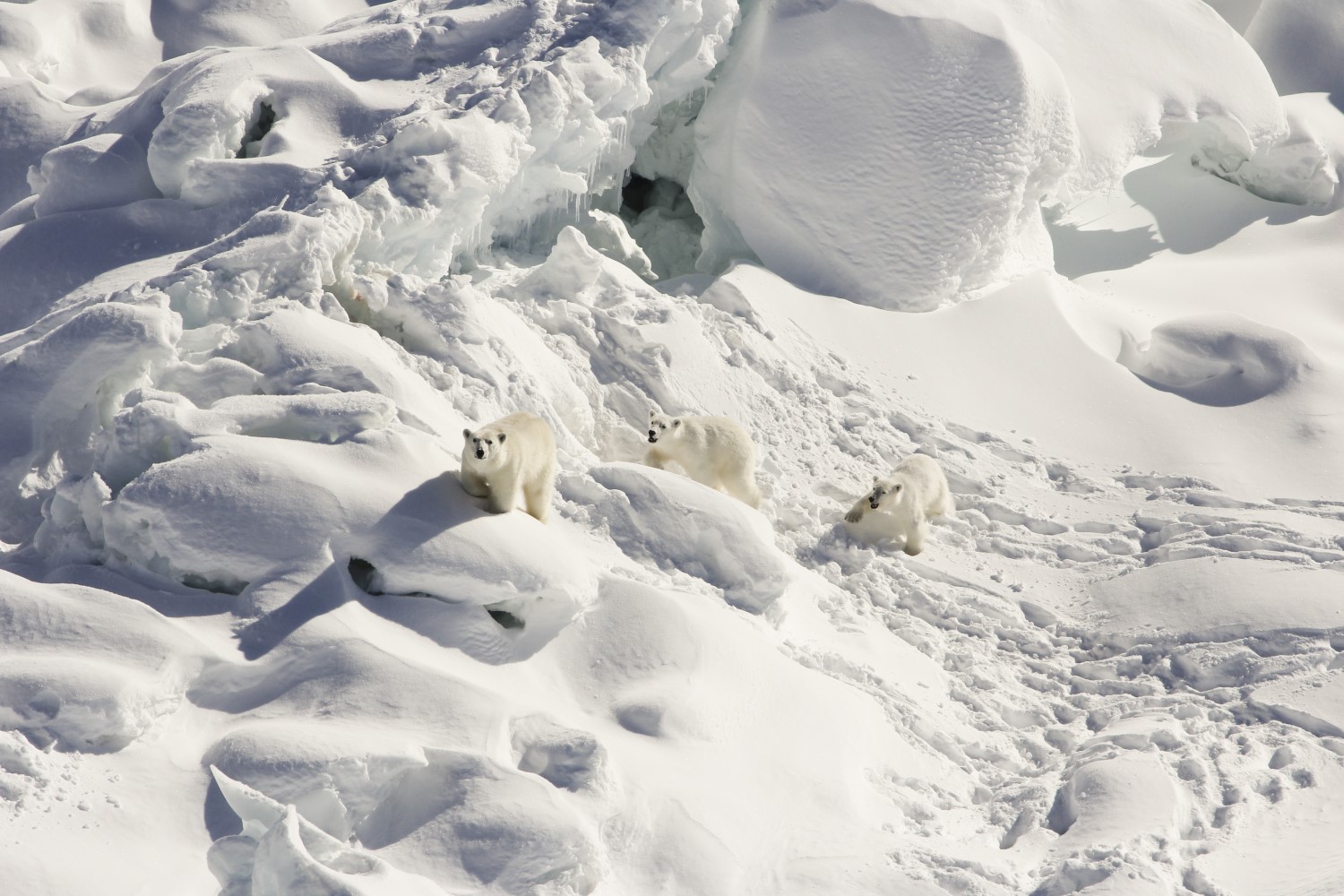
KRISTIN LAIDRE/UNIVERSITY OF WASHINGTON/NYT/RITZAU SCANPIX, 2015
The polar bear is found in five different sub-populations in Greenland: Kane Basin, Baffin Bay, Davis Strait, Arctic Basin and East Greenland, and can be found almost anywhere in the country, although they are rare in inhabited areas. It is believed that 300 polar bears live in Kane Basin, 3,000 in Baffin Bay and 2,000 in Davis Strait.
The Greenlandic catch of the charismatic polar bear comes from populations in Kane Basin, Baffin Bay, Davis Strait and East Greenland. Overall, the quota in 2022 was 155 bears. In addition to the quota, there is a small number of ‘problem bears’ that are shot in self-defence. The three populations in West Greenland are shared with Canada, and constitute about 5,500 bears. It is not known how many bears there are in East Greenland.
The polar bear’s main food is the ringed seal, but other seal species and other mammals are also polar bear prey. The hunt for seals takes the bear across vast ice-covered seas, and bears can be found far from land in both Baffin Bay and the Greenland Sea. In summer, when the ice retreats, most bears must remain on land and feed on the berries they can find, carcasses drifting ashore or land mammals. Hungry bears can also attack humans, depots and remains of human activities.
In November, female polar bear head for mountain slopes where they can dig a lair in the snow. There are many lair areas in East Greenland, but few in West Greenland, which is likely due to human activity. The female gives birth to one or two cubs at the end of the year, but it is not until February-March that the cubs are big enough to come out of the lair with their mother. After four months of fasting, the mother is busy catching seals to keep the suckling going, so lair areas lie close to areas with access to seals. Ice formation on the sea and in fjords is therefore crucial for the polar bear’s survival, and it is unquestionable that the reduced ice cover resulting from global warming will result in the polar bear losing large parts of its Arctic habitat. In Greenland, the loss of habitat will be greatest in southern areas, particularly in Southeast Greenland, but areas in West Greenland where bears come from Canada will also be affected as ice cover in Baffin Bay diminishes.
Further reading
- Biodiversity and nature management
- Bird species in Greenland
- Coasts
- Seals in the Greenlandic waters
- Seasonal pollution in Northeast Greenland
- Systematic environmental monitoring
- The climate in Greenland
- The ice sheet
- The ice-free landscapes
- The National Park in north and east Greenland
- The sea and the fjords
Read more about Nature and landscape in Greenland
